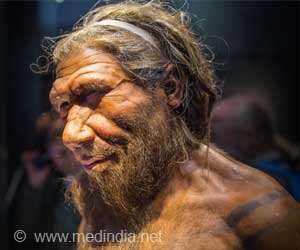The spring in our step, measures the incredible energy efficiency of the ankle and is more than just a good mood says a new research.
A new study has shown that the spring in our step is more than just a good mood, by measuring the incredible energy efficiency of the ankle.
Using a bionic boot, the researchers found that during walking, the ankle does about three times the work for the same amount of energy compared to isolated muscles.In other words, the researchers said, the spring in your step is very real and helps us move efficiently.
According to Daniel Ferris, associate professor with the University of Michigan Division of Kinesiology and lead researcher on the project, this is the first known study to measure the energy efficiency of a body part such as the ankle.
The results recommend manufacturers should rethink prosthesis design so the ankle part can do more of the work, said Ferris, who also holds an appointment in the Department of Biomedical Engineering.
He added that the findings also shed light on why rehabilitation and mobility is so exhausting for people with unhealthy ankles or neurologic problems.
Greg Sawicki, a graduate student working with Ferris and now at Brown University, built a bionic ankle equipped with fake muscles that mimic real muscle activity in the ankle, Ferris said.
Advertisement
"The ankle is incredibly efficient at working so the amount of energy you burn with the ankle is much lower than what would be predicted with just isolated muscle studies," Ferris said.
Amputees and people with neurologic disorders don't have the "bounce" of the stored energy in the ankle, Ferris said.
"For amputees, we need to come up with a better way for them to have a powered push off at the ankle," Ferris said.
An example of this for running is the prosthetic used by controversial Olympic hopeful Oscar Pistorius, a double-amputee who wears a special curved blade called a Cheetah. As the blade compresses on strides it stores energy, which is released during push off, similar to a human ankle.
However, the Cheetah is great for sprinting but would not work for walking. The foot is on the ground too long to take advantage of the energy return during walking. The muscle and tendon act more like a catapult during walking, storing energy slowly and releasing it at just the right moment.
The next step, Ferris said, is to build a bionic hip and measure the efficiency of the hip during walking.
Source-ANI
SPH/L





